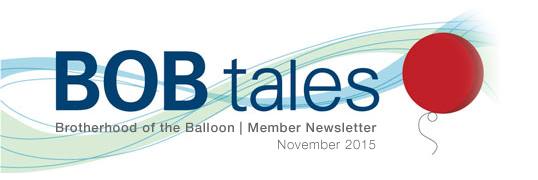
Dear Members (a note from Deb Hickey):
It’s been 15 years.
.jpg) It was early September 2000, and I was preparing for my wedding the following month. The song I would dance to with my father was almost as important as the song I would dance to with my new husband.
It was early September 2000, and I was preparing for my wedding the following month. The song I would dance to with my father was almost as important as the song I would dance to with my new husband.
You’ve heard of my dad—you all know him as Bob Marckini, author, proton therapy advocate, founder of the infamous BOB … Well, he’s also the guy who used to make up stories and sing silly songs to me at bedtime. If I close my eyes I can still remember sitting on his foot while he walked around the living room, my arms wrapped around his leg … “Where’s Deb? Where did she go?” He would say. The more he said it, the more I giggled and wrapped my arms tighter around his calf. That is one of my greatest memories.
I had my “father daughter” wedding song picked out for years before my “big day.” I would dance with my dad to Bob Carlisle’s “Butterfly Kisses.” For months, I’d envisioned how we’d waltz across the dance floor, my hand in his, holding back tears of joy while laying my head on his shoulder. And it was almost just like that.
The only thing I hadn’t imagined at the time was that when the song began to play and my father grabbed my hand, the aching fear in my heart that this would be the last time we would dance together. You see, he told me just weeks before my wedding that he’d been diagnosed with cancer.
His carefully crafted “speech” went something like this: “I have something to tell you and I don’t want you to worry. I have prostate cancer.” Without hesitation he continued, “I’ve done my research and found the best treatment in the world. I’m headed to Loma Linda, California to receive a special kind of treatment called proton therapy.” He may have gone on to explain what the treatment entailed, but I don’t remember. He told me that he was confident in his decision and that he wasn’t concerned. Mom would be going too. He reassured me over and over that the treatment he was to receive was the best in the world for his type of cancer.
Dad was always good at calming my fears, but he’d never prepared me for this. He was the one who fixed everything. What if he couldn’t fix himself? What if I lost him too soon? These thoughts were spinning through my head during that dance at our wedding. The tears? Oh, they were there, but instead of feeling the pure joy and excitement I’d imagined, they were clouded with feelings of dread.
The song played …
There’s two things I know for sure … She was sent here from heaven and she’s Daddy’s little girl … As I drop to my knees by her bed at night, she talks to Jesus and I close my eyes and I thank God for all of the joy in my life … Oh, but most of all, for butterfly kisses after bedtime prayer; sticking little white flowers all up in her hair … “Walk me down the aisle, Daddy, it’s just about time” …” I know I gotta let her go, but I’ll always remember every hug in the morning and butterfly kisses …
.jpg) So there are two things I know for sure. He was the one sent down from heaven to be my father because there’s nobody else who could have fit the bill. The second thing I know for sure—and I used to tell all my friends when I was a kid—I should have known it all along—he’s the “smartest man in the world” because he found a way to fix himself. Not only that; he actually improved his health and his spirit … by choosing proton therapy at Loma Linda University Cancer Center.
So there are two things I know for sure. He was the one sent down from heaven to be my father because there’s nobody else who could have fit the bill. The second thing I know for sure—and I used to tell all my friends when I was a kid—I should have known it all along—he’s the “smartest man in the world” because he found a way to fix himself. Not only that; he actually improved his health and his spirit … by choosing proton therapy at Loma Linda University Cancer Center.
Best of all, 15 years after my dad’s diagnosis, he’s the best Papa in the world to my 4-year-old daughter. Now she gets to ride on his foot. And for that, at Thanksgiving time and always, I’m truly thankful.
I hope you enjoy this month’s BOB Tales. My father and I also hope to meet many of you in Loma Linda next week when he and I visit for the 25th Anniversary Celebration of the James M. Slater Proton Treatment and Research Center.
As always, we welcome your feedback and suggestions for future newsletters. Just send an email to [email protected].
Deb Hickey
To print the BOB Tales newsletter or view the newsletter with a larger font size, click here for the PDF file.
In this Issue:
- Prostate cancer diagnoses drop after USPSTF “Don’t Screen”
- New legal help for dealing with medical insurance denials
- “Proton therapy no longer ‘fringe’ treatment due to success rates, low side effects"
- New gel may further reduce chance of damage to rectum
- Meet Bob and Deb in Loma Linda next week!
- A special Thanksgiving “thank you” to BOB helpers
.jpg)
Prostate Cancer Diagnoses Drop after USPSTF “Don’t Screen”
Many members have written to us and expressed their anger over news stories reporting that prostate cancer diagnoses have dropped dramatically as a result of new government guidelines on screening.
An article appeared in the Journal of Urology on September 22, 2015 titled, “Prostate Cancer Diagnoses Drop after USPSTF ‘Don’t Screen.’” It was reported in Medscape Medical News.
The article reported that the diagnoses of low, intermediate, and high-risk prostate cancers declined significantly during
the first year following the US Preventive Services Task Force (USPSTF) recommendation against regular prostate specific antigen (PSA) screening.
In the past, the USPSTF had recommended against routine PSA testing in men older than 75, but the new guidelines extend this guideline to all men. The USPSTF feels that “PSA testing harms outweigh the benefits.”
We have said many times in this forum that it’s not the PSA test that is harmful; it’s the decisions and actions taken by some physicians after the PSA test that may be harmful to some patients, such as scheduling biopsies when not needed or over treating certain low-grade, slow-growing prostate cancers.
The article reports that high-risk disease could be on the increase because of the decline in PSA screening. One study found that the rate of higher-risk prostate cancer rose significantly in the U.S. during 2011 and 2012. These changes “coincide with the changes that were made in USPSTF prostate cancer guidelines in 2009 and 2011,” according to the article. “Without screening, many of these cancers will not be detected until they are advanced,” Dr. Daniel Barocas, lead author of the study reported. “Patients are generally not symptomatic until the disease is more advanced and may be difficult to treat.”
Many times during the year, we report in our newsletters about members of our group who are enjoying life after proton treatment. Last month we wrote about 102-year-old Charlie Einsiedler. Charlie was diagnosed and treated at age 87 when his PSA was rising rapidly. Charlie might not be with us today had he not had a PSA test and taken action 15 years ago. Charlie’s is one of hundreds of similar stories we have covered over the years.
We on the BOB team are not physicians and are not qualified to make medical recommendations, but it is our belief that PSA screening, while not a stand-alone diagnostic tool, is an important test that should continue to be used, particularly with high-risk men, such as African Americans and close relatives of those already diagnosed with prostate cancer. Any action taken after PSA testing should be based on careful analysis, possible further testing, and always discussion with qualified medical professionals.
New Legal Help for Dealing with Insurance Denials
We have mentioned in previous BOB Tales that we have been in communication with the National Association for Proton Therapy (NAPT) in hopes of developing a list of law firms that can assist prospective proton patients in the appeal process if/when their medical insurer has denied coverage for proton therapy.
We have a list of four firms that have experience in dealing with proton therapy insurance denials.
One is the law firm mentioned in last month’s BOB Tales, which seems to be having some success with an appeal against Aetna, in support of a Texas man who was denied proton therapy for prostate cancer. The four firms are located in Texas, Pennsylvania, Massachusetts, and California.
We can’t endorse any of these law firms; patients should fully vet any counsel they are considering. But we can make the current list available to BOB members and prospective patients who are dealing with insurance denials.
 For a list of the four law firms that have experience in dealing with proton insurance denials, contact Deb Hickey at [email protected].
For a list of the four law firms that have experience in dealing with proton insurance denials, contact Deb Hickey at [email protected].
We invite members to help us expand this list by sending us contact information on any counsel you are familiar with who has experience in dealing with proton therapy insurance denials.
“Proton Cancer Therapy No Longer ‘Fringe’ Treatment Thanks to Exceptional Success Rates, Low Side Effects”
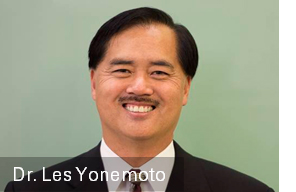 This is the title of an article in NewsOK, September 14, 2015. The article features Dr. Les Yonemoto, a prominent radiation oncologist who trained at Loma Linda University Cancer Center and is treating patients at ProCure Proton Therapy Center in Oklahoma. Les is a friend of ours and frequently makes himself available to answer complex questions on proton therapy and cancer treatment.
This is the title of an article in NewsOK, September 14, 2015. The article features Dr. Les Yonemoto, a prominent radiation oncologist who trained at Loma Linda University Cancer Center and is treating patients at ProCure Proton Therapy Center in Oklahoma. Les is a friend of ours and frequently makes himself available to answer complex questions on proton therapy and cancer treatment.
The article points out the fact that for years prostate cancer patients who chose surgery or traditional radiation therapy frequently had to deal with severe side effects such as incontinence and impotence. Proton therapy, which is more targeted, he points out, “eliminates about 60 percent of excess radiation delivered to healthy tissues surrounding the prostate compared to IMRT.” One comparison study shows a 35-to-59 percent reduction in radiation exposure to the bladder and rectum with proton therapy vs. IMRT.
“The Hippocratic Oath says to do no harm,” Yonemoto said. “Proton therapy is one of the most straightforward and logical methods to do that. It makes sense to harm less normal tissue that doesn’t have cancer.”
Yet some physicians, Dr. Yonemoto points out, tell their patients that proton treatment is not well studied or there isn’t enough evidence to recommend it. “Nothing could be further from the truth,” he said, and he encourages patients to seek opinions beyond the first specialist they see. Patients should talk not only with the doctor who diagnoses them, but also with medical oncologists, surgical oncologists, and radiation oncologists. He believes that when prostate cancer patients ask the right questions and collect the facts, more and more will choose proton therapy.
We agree.

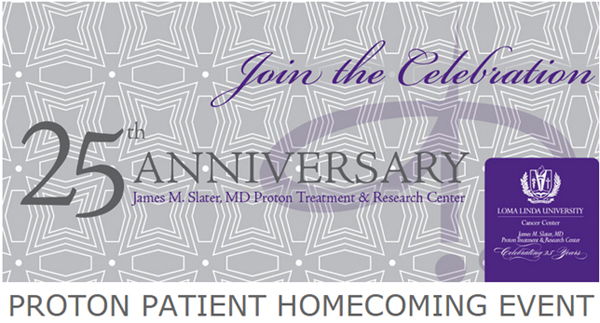
It’s Next Week! LLUCC 25th Anniversary Celebration
In celebration of Loma Linda University Health’s 25th Proton Center Anniversary, all BOB members are cordially invited to the James M. Slater, MD Proton Treatment & Research Center Patient Reunion event on Monday, October 26, 2015—just one week away!
Haven’t signed up yet? It’s not too late! Sign up online or call 877-LLUMC-4U.
Join proton therapy pioneer, Dr. James Slater, radiation department chairman, Dr. Jerry Slater, Loma Linda University Health, current and former proton patients, and your fellow BOB members on Monday, October 26 for the Patient Homecoming Celebration. Deb Hickey and Bob Marckini are looking forward to meeting and spending time with many members of the BOB who will be in attendance.
Don’t forget, there is also a whole host of activities (hiking, tours, wellness seminars, and more) being held on Sunday, October 25, and Monday, October 26. Want to learn more about the activities? Just ask!
Here are few photos from the 20th Anniversary Celebration in 2010. We look forward to capturing more memories this year!
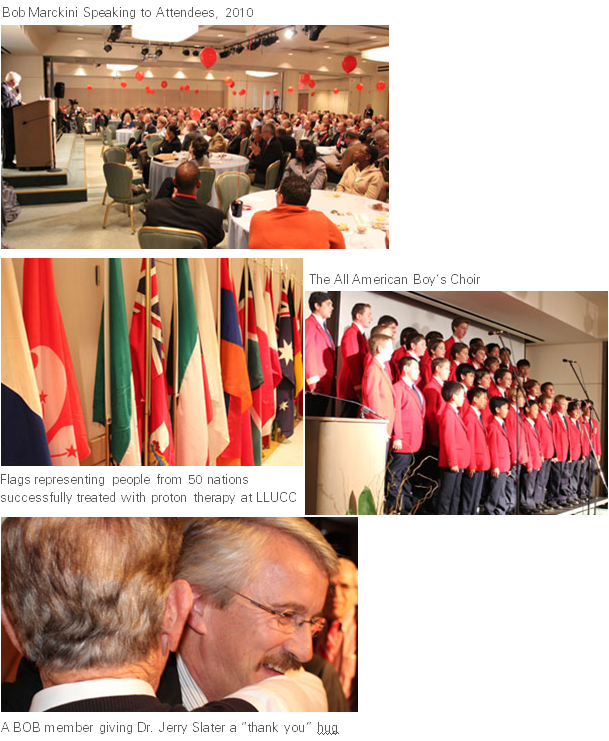
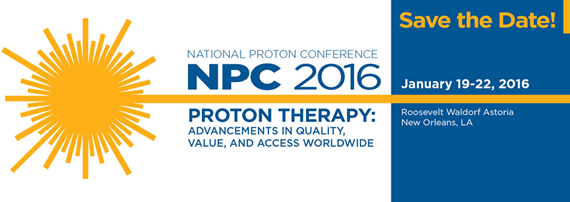
The National Association for Proton Therapy (NAPT) will be holding its National Proton Conference on January 19-22, 2016, at the Roosevelt Hotel, New Orleans, Louisiana. Registration will open shortly. Questions regarding the event can be sent to Lis Veilleux
at NAPT.

Member Feedback
How One BOB Member Helps Our Mission
Each month, we hear from members who tell us they forward our BOB Tales newsletter to friends and acquaintances. This is a great way to fulfill an important part of our mission, which is to spread the word on proton therapy within our communities.
Last month we heard from Dave Vahlsing (Wynnewood, PA) who told us he sends our monthly newsletter to more than 30 friends and acquaintances, including his primary care physician and another physician friend.
When forwarding the BOB Tales to friends, Dave typically writes an introductory note, summarizing the key points of the newsletter, hoping to stimulate interest in opening, clicking through, and reading the entire newsletter. Here’s the introductory note Dave sent to friends with last month’s newsletter:
Here is the latest BOB Tales newsletter. Note the increasing number of proton facilities in the USA—17 plus 12 more on the books. And note the increasing use of proton for breast cancer and why it has a major advantage over photon radiation.
Also, the indication that studies are providing support to the claim that higher cost initially for proton treatment can save plenty when including follow-up costs for other treatment methods and quality of life issues.
I am in my 8th year since treatment and other than normal wear and tear on a 79-year-old body; I am enjoying life fully and see myself as being fortunate to have learned of this option when it was not available in Philadelphia.
Please keep in mind that I will gladly talk about my experience with anyone who is stricken with “the Emperor of All Diseases.” Medicine has taken major strides toward treatment and offers great hope for us and for our families. Just do your homework to determine what is best for you.
And let me know if you prefer that I not forward these newsletters to you in the future.

BOB Comment: Bravo, Dave! Keep spreading the word about proton! If there are others out there who are doing something similar or have found other creative ways to spread the word about proton therapy, we want to hear about it!
Member Comments on Last Month’s Newsletter
Pastor Ewing “Bud” Carroll sent this message to us following last month’s issue of BOB Tales:
My continued love, thoughts, and prayers for you all. And, add my personal gratitude! It’s amazing to see how proton treatment is enlarging in terms of treating an increasing number of tumor sites.
I will be with you all in spirit as you celebrate the Big Silver Anniversary at Loma Linda.
I had my PSA checked two weeks ago while visiting a doctor here in Bali. It was 0.3. My foot hurts, but the rest of me feels GREAT.
Congratulations to 102-year-old Charlie Einsiedler—but those cupcake icings look lethal. Is food coloring harmful? Meanwhile, I’m on to eating more cauliflower, a staple diet here in Bali. BTW, I’ve been drinking soy milk for years, but not the stuff that has sugar and other junk in it. Fortunately, Vitasoy, produced in HK, is only soy beans and water. I also eat lots of tofu and the Indonesian tempeh. Yummy.
Bob’s bit about adding water to chicken reminds me how some big city supermarkets dump their older, wilted veggies in economically poorer areas with the same or higher prices. Sad.
Blessings, joy & peace to all.

BOB Comment: Pastor Bud has been a support to the BOB for years and has been in regular contact regularly with Deb since following her husband’s pancreatic cancer diagnosis in March of 2014. Thank you, Bud, for your continued support and prayers.

Who Proton Therapy is Helping
Meningioma
Three years ago, Marisabel Nicoletti’s doctor asked a very startling question: “Do you know you have a brain tumor behind your left eye?” The doctor went on to explain that Mrs. Nicoletti had a meningioma in the membranous layers surrounding her brain.
“It was like the end of the world,” she recalls. “I was in shock for almost a month, refusing to talk to anybody.”
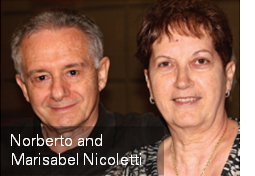 Several weeks later, Mrs. Nicoletti and Norberto, her husband, ran into a neighbor who expressed concern and inquired as to how Mrs. Nicoletti was doing. “Slowly, I was able to cry and open up,” she recalls. “She asked if we could pray together.”
Several weeks later, Mrs. Nicoletti and Norberto, her husband, ran into a neighbor who expressed concern and inquired as to how Mrs. Nicoletti was doing. “Slowly, I was able to cry and open up,” she recalls. “She asked if we could pray together.”
Armed with the support of her family and her neighbor, Mrs. Nicoletti launched a relentless search for the best treatment option. With two adorable grandkids, a wonderful daughter and son in-law, a loving husband, large family and many friends, she had plenty of reasons to live. She made up her mind to do whatever it took to get the help she needed.
She eventually narrowed her search to four prominent institutions—the Mayo Clinic, UCLA, University of Pittsburgh Medical Center, and Johns Hopkins.
“The four,” she reasoned, “rank among the finest health centers on earth; surely one of them will be able to halt the growth of the tumor and save my vision.” She was soon to be disappointed.
“They all offered me the same three choices,” she says. “I could do nothing and lose my vision, have a craniotomy with a 50/50 chance of success and maybe lose my vision, or undergo normal radiation with the same luck.”
Mrs. Nicoletti didn’t like any of those options. “I was involved in a lot of things that use my eyes,” she says. “I didn’t want to lose my vision.”
Disappointed yet undeterred, she intensified her quest for a better alternative. “We kept searching the Internet and found the Loma Linda University Cancer Center website.”
Determined to investigate every possibility, she and Norberto traveled to California to consult with Lilia Loredo, M.D., a radiation oncologist at LLUCC.
“Since the first moment I arrived here,” Mrs. Nicoletti shares, “Dr. Loredo had a different opinion. She said proton could be an option.”
Physicians and scientists at the James M. Slater, MD, Proton Treatment & Research Center have successfully treated more than 18,000 patients with proton beams in the past 25 years. Many of those individuals had previously been told their condition was fatal and untreatable; yet today, many years later, they’re living active, healthy lives and singing the praises of protons.
Dr. Loredo explained that while the majority of proton patients are in treatment for prostate or lung cancer, many come to LLUCC with brain tumors. She also said ongoing clinical trials are finding solid applications for proton treatment of breast cancer and other diseases.
Mrs. Nicoletti returned to Kansas almost convinced that God led her to Loma Linda. One thing still bothered her, however: if proton therapy really is as harmless and effective as Dr. Loredo claimed, how come none of the other institutions suggested it?
The answer arrived from an unexpected source when a radiation oncologist at one of the four institutions she initially consulted bravely disclosed that her organization was far behind Loma Linda in proton expertise. “She advised me to go where the pioneers are,” Mrs. Nicoletti remembers. “I took that as confirmation that I was supposed to go to Loma Linda.
Unbeknown to Mrs. Nicoletti, proton researchers at LLUCC are among the world’s leading authorities in understanding and treating meningiomas. An August 2012 article in the International Journal of Radiation Oncology, Biology, Physics presented the findings of a study conducted at LLUCC on the type of tumor Mrs. Nicoletti had. Principal author, Jerry D. Slater, M.D., and a team of scientists—one of whom was Dr. Loredo—concluded that “fractionated proton radiotherapy for grade 1 cavernous sinus meningiomas achieves excellent control rates with minimal toxicities, regardless of surgical intervention or use of histologic diagnosis. Disease control for large lesions can be achieved by primary fractionated proton therapy.” In other words, the treatment is effective against meningiomas.
Mrs. Nicoletti’s treatment began June 6, 2011. A mere month and 13 days later, it was over. The Nicolettis returned to Lenexa hoping and praying the meningioma had been killed.
At her first post-procedure checkup six months later, she received good news—the tumor was inactive.
At her next evaluation, a full year after treatment, the results were the same; everything was still looking good. In August of 2013, the couple returned to LLUCC for her two-year checkup. Once again, the prognosis could not have been better. To celebrate, Mr. and Mrs. Nicoletti took their two grandkids to Disney World.
Please Support Proton Research
Make a Future Gift:
Contact Todd Mekelburg at the Office of Planned Giving at Loma Linda University Health at 909-558-5376 or email [email protected].
Donate to the Marckini Chair:
- Send a check made out to “LLUCC Proton” to Loma Linda University Health, Office of Philanthropy, P.O. Box 2000, Loma Linda, CA 92354. Memo line: “Marckini Chair.”
- Donate online or call Elvia DeHaro at 909-558-5010.
Other Ways to Give:
Contact Matt Miller at the Office of Philanthropy at Loma Linda University Health at 909-558-3582 or email [email protected].

Nine Ways to Prevent a Stroke
A stroke is the interruption of blood to the brain, either because a blood vessel is blocked or because of bleeding into the brain. Each year more than 700,000 Americans suffer a stroke.
Don’t Wait to Have a Stroke
Neurologist and Associate Director at the Comprehensive Stroke Center at MedStar Washington Hospital in Washington, D.C., Richard Benson, MD/PhD, feels that if you change certain behaviors and take specific steps, you can reduce your risk of stroke by as much as 80 percent. Here are nine ways to prevent a stroke:
1. Know Your Risk Factors: For example, the older you are, the higher the risk. Also, women, African Americans, and Hispanics are at higher risk than others. You can’t change these facts, but knowing your risks may motivate you to make changes where you do have control.
2. Get Active: Reduce your risk by 20 – 30 percent by exercising several times a week. Exercise lowers weight, cholesterol, and blood pressure. A Harvard study showed that walking 20 minutes a day can cut stroke risk by 40 percent.
3. Lose Weight: Excess weight raises blood pressure; increases insulin resistance; and can lead to metabolic syndrome, which promotes diabetes. Diabetes is an independent risk factor for stroke.
4. Quit Smoking: Smoking promotes the build-up of fat in the carotid artery. Nicotine raises blood pressure. Smoking doubles the risk of ischemic stroke and quadruples the risk of hemorrhagic stroke.
5. Drink Prudently: Those who drink more than two drinks a day have a 34 percent higher risk of stroke than those who drink half a drink or less. However, antioxidants in wine, especially red wine, help protect against the build-up of fat in the arteries.
6. Treat Depression: Depression raises your risk of stroke by 29 percent. People who are depressed tend not to be physically active leading to weight gain, high blood pressure and high cholesterol.
7. Don’t Oversleep: A study has shown that people who sleep more than eight hours a night have a 46 percent greater risk of a stroke than those who sleep less. If you are over 60 and sleeping more than eight hours, you should check with your doctor about heart health. Sleep apnea is also a risk factor for stroke.
8. Mind Your Migraines: People who get migraines have a greater chance of having a stroke caused by a blood clot. Women are more likely than men to have migraines (because of hormones). Some people who get migraines know their next one is coming because they see a warning, or aura, like flashing lights. Those who have auras with their migraines have a greater risk of stroke than those who don’t have auras, research shows.
9. Heal Your Heart: Blood clotting can result from certain heart irregularities, and if a clot travels to the brain, it may cause a stroke. Anti-clotting medication and certain medical procedures can help prevent clots.
Get Your Flu Shot!
Flu season starts in October and typically runs through May. Early October is the time to get your flu shot (you’re late if you haven’t gotten yours!)—and this vaccine is expected to be more effective than last season’s.
Do I Need a Shot Every Year?
Yes—every season’s flu virus is different.
Why Is It So Important?
Last flu season, 146 children lost their lives to the illness. On average, 20,000 children annually are hospitalized with the flu. Adult deaths are not tracked, but studies estimate thousands of people die from the flu every year. The flu can be particularly difficult for the elderly, and it can pose a real challenge to adults who have underlying chronic health conditions such as asthma.
Series: Top 20 Most Common Health Questions
Last year, we began a series on the top 20 most common health questions (and answers) from Business Insider Magazine. Here is another question from that list.
Can yogurt ease digestive problems?
Short answer: Yes. Our digestive tract is filled with microorganisms—some good and some bad. Yogurt contains beneficial bacteria, generically called probiotics, that helps maintain a healthy balance. Probiotics can relieve several gastrointestinal problems, including constipation and diarrhea.
Certain brands of yogurts are marketed exclusively to treat tummy issues.
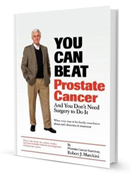

#3 on Amazon!
Bob Marckini’s book, “You Can Beat Prostate Cancer: And You Don’t Need Surgery to Do It,” continues to sell very well and is helping to spread the word about proton therapy throughout the world. Many proton treatment centers in the U.S. distribute the book in response to patient inquiries. We are told this has greatly helped prospective patients understand the benefits of proton therapy resulting in a large percentage choosing this treatment for their prostate cancer. Nothing makes us happier.
At the time of this writing, there are 46,193 products (31,223 books) available on Amazon.com on the topic of prostate cancer. Bob’s book has been in the top 10 in this category for the past six years. In the past few months, the book has moved up to the number three position on Amazon and is holding. This means that when people perform searches on Amazon for “prostate cancer” in general, or specfically, books about prostate cancer, Bob’s book is one of the first results they see. Based on emails we receive from readers, the book continues to greatly influence men to choose proton therapy for their prostate cancer.
We can use your help to keep our book at the top on Amazon. Book positioning in the search results is based on a combination of sales (both hard cover and Kindle versions) and weighed heavily upon reader reviews.
We have the largest number of reader reviews (232) of any book in the top 50 on Amazon. But one book is catching up to ours, “Guide to Surviving Prostate Cancer,” by Dr. Patrick Walsh. This book, which promotes surgery, is in the number one position and has 202 reviews.

If you would like to help us maintain or improve our position, we encourage you to go to Amazon, write a short review of our book, and rate it from 1 to 5 stars. Just click here and click on the yellow “Write a review” button. Let others know if the book was helpful to you!
Soon to be Available in Spanish
Thanks to the generosity of one of our members, our book has been translated into Spanish and will soon be available to the Latin community all over the world. As soon as the Spanish version is in print we will notify our members, many of whom live in Spanish- speaking countries.
We are also looking into making the book available to the hearing impaired.
Here is an excerpt from what one reader recently had to say:

Got prostate cancer? Read Bob Marckini’s book first. By Herbert E. Knoll, Jr.
WARNING: My doctor refused to help me learn about proton therapy. Thanks to Bob Marckini, I was able to learn about proton therapy and was treated at the University of Florida Proton Center. When reading Bob’s words, I felt like I was taking his journey with him. Read what you must, but don’t overlook the opportunity to read Bob’s teachings. YOU WILL BE SO GLAD YOU DID.
UPDATE: Two years after my treatment, my PSA is down to .33 and I have had zero side effects. Need I say more?
Holiday Discount for BOB Members
The holidays are quickly approaching. Is there someone special in your life that may benefit from reading Bob Marckini’s book? Do you have a son, brother, or other family member who is at higher risk for developing prostate cancer? Now is the time to place
your order. We are offering a special holiday discount:

To take advantage of our holiday discount, simply send an email with the quantity that you desire to [email protected]. Remember, proceeds from book sales are used to help fund our efforts and to support proton therapy research through the Robert J. Marckini Endowed Chair.
More Information
Paperback: $19.00--•--Kindle: $9.99--•--NOOK Book: $9.99--•--Apple iBook: $9.99
Proceeds from book sales help fund BOB efforts and support proton therapy research.
Again, if you found Bob’s book helpful in making your proton treatment decision, please post a review on Amazon.

Movember 2015
November is the time of year when men from around the world sprout mustaches (or shave if they typically wear a mustache) to support “Movember,” an official global charity with a mission to raise awareness about men’s health issues. Through “the power of the Mo,” vital funds and awareness are raised to combat prostate and testicular cancer and mental health challenges.
Even if you haven’t joined an official Movember group in your community, please let us know if you grew (or shaved) a mustache this month to build awareness about proton therapy for prostate cancer. And please—send a photo—we may post it in our next newsletter.

If you are daring enough to grow a mustache (or shave one off) in recognition of Movember, let us know about it! The first to write in and send us a photo will receive a signed copy of Bob’s book!
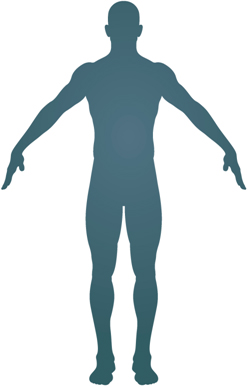 Incredible Facts about the Human Body
Incredible Facts about the Human Body
We begin this month a four-part series on incredible facts about the human body. The human body is, without a doubt, the most incredible and complex “machine” on the face of the planet. In an age where mankind sends people into space and keeps coming up with greater inventions, the human body is still full of undiscovered mysteries. In this series, we will share some of them with you:
Part I of IV
- Up to 70 percent of your liver can be removed and it will completely regenerate.
- Our total blood volume goes through our kidneys 65 times a day.
- Humans are the best long-distance runners in the animal kingdom.
- A human baby has over 60 more bones than a fully grown adult.
Hottest and Coldest Places on Earth
Hottest: For most of the 20th century, the highest air temperature ever recorded on earth was 134 degrees Fahrenheit (54° C) at Death Valley National Park on July 10, 1913. But on May 7, 2013, a temperature reading of 136.4 degrees Fahrenheit (58° C) was reported in Al Aziziyah, Libya.
Coldest: On the high ridge of the East Antarctic Plateau, the temperature can drop to as low as minus 135.8 degrees Fahrenheit
(-93.2° C), which was recorded in August 2010.
Estate Planning Hints
BOB Member Ron Hendricks is Director of Gift Planning for Trinity Western University. He regularly copies us on his “News from Ron” mailings, which are helpful hints on estate planning to the readers of his newsletters. We have found Ron’s suggestions to be timely and beneficial. With his permission we periodically share some of his wisdom with our membership. Here is a recent segment:
More Income—Bypass Capital Gain Taxes—Income Tax Deduction
I was visiting with a couple that was nearing retirement age who wanted to spend more time in the mission field. They owned a rental home, which was used to provide monthly income. As they grew closer to their retirement age, they had a desire to spend less time on themselves, more time in serving God’s kingdom, and less time managing their rental property.
They approached me to see how I could help them and I suggested that they consider a special Trust, which would pay them 6 percent interest during their lifetimes. They gifted a portion of their rental home into this special Trust and then partnered with the Trust in selling the rental property. At closing, they received cash to pay off the debt they owed on the rental and still had cash left over for personal use. The balance of the sales price funded the Trust in order to pay them 6 percent interest for both of their lifetimes. Their decision allowed them to pay off their debt on this property, no longer have the stress of the rental, receive immediate cash, and bypass their capital gains tax. In addition they received a generous charitable deduction to offset their ordinary income tax for up to five years. This Trust gave them lifetime income at 6 percent interest.
They had accomplished all of their goals; they received more income than previous years without the management of the rental home; reduced future income taxes with their charitable deduction; and were able to spend more time in the mission field.
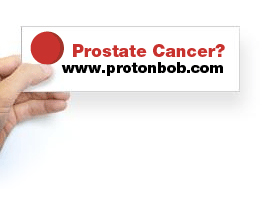 Road Recognition
Road Recognition
Build awareness about protons with a BOB bumper sticker. Just send $6.00 to Bob Hawley: P.O. Box 45, Mt. Angel, OR 97362 and he’ll mail you one. Or, email Bob at [email protected].
All proceeds go to the Robert J. Marckini Endowed Chair for proton therapy research at LLUCC.
Quote of the Month
“I decided to change calling the bathroom ‘the John’ and renamed it ‘the Jim.’ I feel so much better saying I went to ‘the Jim’ this morning.” —Anonymous

Last Month's Brain Teaser
What do all these countries have in common?

Answer: They all have operating proton treatment centers. Some have multiple proton centers, including the USA with 17, Japan with 8, Germany with 5, Italy with 3, Russia with 3, China with 2, and France with 2. Not all of these proton centers are high energy proton systems that can treat tumors deep inside the body, such as prostates, but most of them do have that capability. Source: Proton Therapy Cooperative Group website
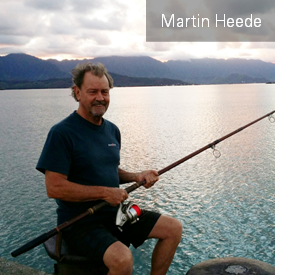 Winner: The first to write in with the correct answer to last month’s brain teaser was Martin Heede of Kailua, Hawaii. “My answer was a total guess!” Martin confessed. “It just seemed to make sense.” Martin told us he loved his time in Loma Linda. “It seemed like retirement more than anything—total freedom to do whatever I wanted with the minor inconvenience of a short treatment at my preferred early morning spot.” He also told us he got “in the best shape” of his life thanks to the Drayson Center fitness program. And, he also got rid of his golf slice.
Winner: The first to write in with the correct answer to last month’s brain teaser was Martin Heede of Kailua, Hawaii. “My answer was a total guess!” Martin confessed. “It just seemed to make sense.” Martin told us he loved his time in Loma Linda. “It seemed like retirement more than anything—total freedom to do whatever I wanted with the minor inconvenience of a short treatment at my preferred early morning spot.” He also told us he got “in the best shape” of his life thanks to the Drayson Center fitness program. And, he also got rid of his golf slice.
Congratulations, Martin! A signed copy of Bob’s book is on the way.
New Brain Teaser
 Two girls were born to the same mother, on the same day, at the same time, in the same month and year and yet they’re not twins. How can this be?
Two girls were born to the same mother, on the same day, at the same time, in the same month and year and yet they’re not twins. How can this be?
Answer next month: Send your brain teaser answers to [email protected].
Holy Humor
There was a very gracious lady who was mailing an old family Bible to her brother in another part of the country.
“Is there anything breakable in here?” asked the postal clerk.
“Only the Ten Commandments,” answered the lady.

A minister parked his car in a no-parking zone in a large city because he was short of time and couldn’t find a space with a meter. Then he put a note under the windshield wiper that read: “I have circled the block 10 times. If I don’t park here, I’ll miss my appointment. FORGIVE US OUR TRESPASSES.”
When he returned, he found a citation from a police officer along with this note: “I’ve circled this block for 10 years. If I don’t give you a ticket I’ll lose my job. LEAD US NOT INTO TEMPTATION.”

There is the story of a pastor who got up one Sunday and announced to his congregation: “I have good news and bad news. The good news is we have enough money to pay for our new building program. The bad news is it’s still in your pockets.”

A Sunday school teacher began her lesson with a question: “Boys and girls, what do we know about God?”
A hand shot up in the air. “He is an artist!” said the kindergarten boy.
“Really? How do you know?” the teacher asked.
“You know, Our Father, who does art in Heaven …”

A minister waited in line to have his car filled with gas just before a long holiday weekend. The attendant worked quickly, but there were many cars ahead of him. Finally, the attendant motioned him toward a vacant pump.
“Reverend,” said the young man, “I’m so sorry about the delay. It seems as if everyone waits until the last minute to get ready for a long trip.”
The minister chuckled, “I know what you mean. It’s the same in my business.”

After Sunday school, a mother asked her very young daughter what the lesson was about. The daughter answered, “Don’t be scared, you’ll get your quilt.”
Needless to say, the mother was perplexed. Later in the day, the pastor stopped by for tea and the mother asked him what that morning’s Sunday school lesson was about.
He said, “Be not afraid, thy comforter is coming.”

A Time to Give Thanks
“Gratitude can transform common days into thanksgivings, turn routine jobs into joy, and change ordinary opportunities into blessings.” —William Arthur Ward

At this time of year, we like to thank all the people and organizations that have helped us with our “ministry.” Without you, we couldn’t do what we do. The list is long, and we always run the risk of leaving someone out, and for that we apologize. To mention a few, we would like to thank …
- Loma Linda University Health and so many of their staff for their long-time, continuous support in so many ways, and especially our good friend, Dr. J. Lynn Martell for his support and for recognizing the BOB potential 15 years ago;
- Jeannie Chase who tirelessly volunteers her time to help men with their insurance appeals;
- BOB member and professional editor, Bob Hawley, who volunteers his time to review our monthly newsletter and also administers the BOB bumper sticker program;
- BOB member, Ron Hendricks, for allowing us to reprint his helpful hints on estate planning;
- The 400+ volunteers who are on our 35 patient reference lists helping others learn about proton therapy by sharing their experiences; and also, our members who go above and beyond to regularly communicate with and even meet in person with prospective proton patients;
- Clinicians in the proton community who have been valuable resources to us;
- The NAPT team for contributing to our newsletter from time to time and for being a valuable resource;
- All those who have contributed to the Robert J. Marckini Endowed Chair at Loma Linda University Cancer Center. Your contributions are helping to advance proton therapy and make a difference in people’s lives for years to come;
- All the caregivers and administrative staff at all the proton centers who take such good care of us when we are so frightened and vulnerable;
- And finally, all our members for your constructive feedback, for the articles you send us, for responding so well to our requests to send emails and letters in support of our causes, and especially for helping to spread the word about proton therapy within your communities.
Without this support, we could not do what we do. And the results show we are making a difference: Our members are well informed ambassadors for proton therapy; our group is responsible for introducing hundreds of men each year to proton therapy; and we have responded to assaults and misinformation on proton therapy as well as attempts to stop reimbursing for proton treatment. And, through our members, we have raised about $11 million, most of which was directed to proton therapy research. We are proud of our group and thankful for our members and all who support our efforts.
We would like to wish you all a wonderful Thanksgiving.
Bob Marckini and Deb Hickey
To print the BOB Tales newsletter or view the newsletter with a larger font size, click here for the PDF file.
NO MEDICAL ADVICE: Material appearing here represents opinions offered by non-medically-trained laypersons. Comments shown here should NEVER be interpreted as specific medical advice and must be used only as background information when consulting with a qualified medical professional.
